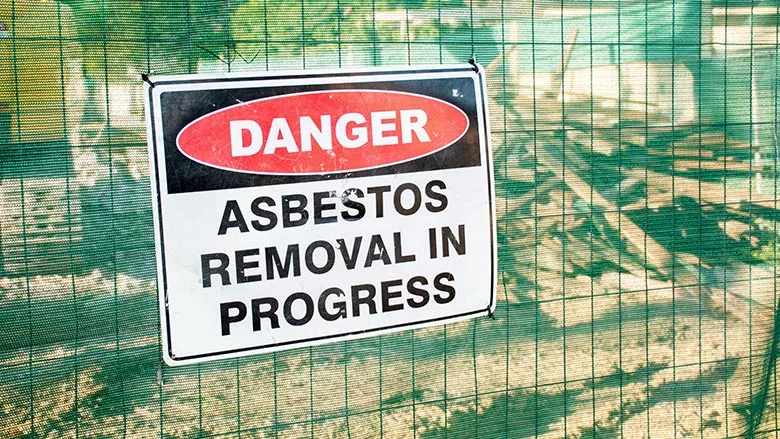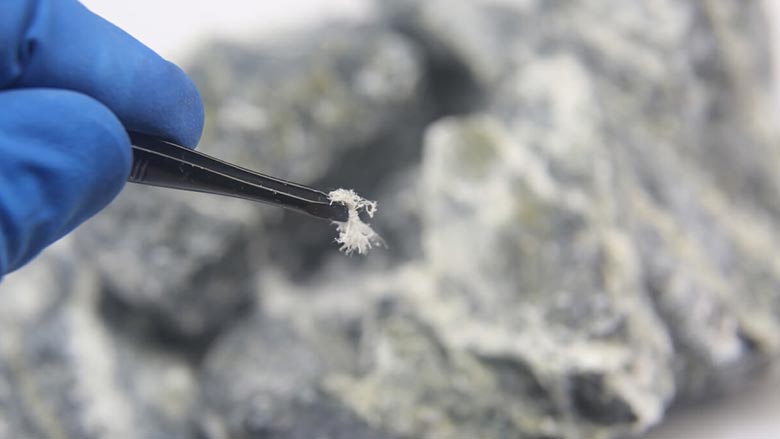Detoxification of Asbestos through High-Power Laser Irradiation: A Closer Look

Photo credit: Daria Nipot / iStock / Getty Images Plus via Getty Images
Asbestos removal is a dangerous job for restoration and remediation professionals. While this mineral fiber is naturally occurring, research over the past few decades has revealed its carcinogenic nature.
Removing asbestos requires precision and care to ensure that everybody on the job site is safe. New technology may make this line of work more manageable and efficient for contractors.
Nippon Telegraph and Telephone Corporation (NTT), a Tokyo-based company, has developed a new process of asbestos transformation through laser irradiation.
How have they achieved this? What does this innovation mean for remediation and restoration professionals?

How High-Power Laser Irradiation Detoxifies Asbestos
In early 2022, NTT announced that its researchers successfully altered asbestos from a fiber into a sphere using high-power laser irradiation.1 The new laser technology also comes with a diffractive optical element (DOE) intended to contain the spread of asbestos dust the laser may cause.
Asbestos is most dangerous when fiber-shaped because it can quickly become airborne. Contractors inhaling the mineral fiber can suffer from long-term illnesses like lung cancer or mesothelioma. Laser irradiation changes asbestos and turns it into a sphere, thus reducing the risk of inhalation and health problems. The NTT researchers also succeeded in using a DOE to curb the laser’s power and control the shape of the beam.2
NTT debuted this technology at the International Society for Optics and Photonics (SPIE) in late February 2022. Adopting high-power laser irradiation would significantly affect the remediation and removal field.3
High-Power Laser Irradiation Advantages
Taking advantage of this high-powered laser irradiation provides several benefits for contractors.
Safer Working Conditions
The primary benefit of this new technology is creating safer work environments. Asbestos can significantly harm the body if restoration and remediation professionals encounter the mineral fiber. The Mesothelioma Center says that one-time exposure to asbestos can cause pleural thickening, mesothelioma or lung cancer.4
Contractors can also harm their co-workers and families through secondhand exposure. The asbestos fibers in the air stick to clothes and can quickly transfer to someone else, even small children. High-powered laser irradiation controls asbestos and renders it harmless in spherical shapes, improving work sites requiring removal.
Room for Improvement
High-powered laser irradiation provides innovative methods for asbestos removal, and there is still improvement in this technology. NTT says other researchers can build upon the laser to make it more affordable for widespread use.
For example, contractors can use silicon to reduce the cost of the laser, considering its affordability. Silicon has increased in price due to supply chain disruptions but remains more affordable than other metals.5
Another area for improvement with this technology is minimizing the laser head’s size. NTT researchers say that using DOEs to reduce the size will help contractors remove asbestos from narrow, hard-to-reach areas.1 Professionals typically have trouble eliminating asbestos from pipes, ducts, walls and ceilings without disturbing the mineral fiber and spreading particles in the air.
Increased Effectiveness
Asbestos removal can be an arduous task requiring days or weeks of labor. Friable asbestos makes the job more challenging due to its fragility, requiring extra care and work. High-powered laser irradiation makes asbestos removal more efficient through extraction and care for the building. This technology lowers the risk of spreading asbestos to fellow workers or building occupants.
Laser irradiation also reduces waste on the job site by vaporizing asbestos or turning it into small, easy-to-remove particles. Contractors will have less waste volume, leading to lower disposal costs. Using high-powered laser radiation helps professionals on a budget and lowers their environmental impact.

High-Power Laser Irradiation Disadvantages
This innovative technology can be effective for remediation and restoration professionals but has drawbacks. Here are a couple of potential disadvantages of high-power laser irradiation.
Malfunction
High-powered laser irradiation is a relatively new technology, so more research and development is necessary to determine any bugs or malfunctions with these systems. Professionals without laser experience may err during asbestos removal and expose themselves and others.
Restoration and remediation professionals should be ready with the proper safety equipment if an error occurs. For example, contractors should have a respirator with a P100 filter to minimize asbestos exposure.6 This filter offers strong protection from asbestos and other contaminants on the job site.
Eye Health
High-powered lasers make asbestos removal more manageable, but this technology can be hazardous to contractors if they don’t use the machines properly. Laser beams are potent and can permanently damage eyes and cause blindness. Contractors should emphasize safety at every step of laser operation.7
Every professional in the room should wear laser safety glasses with the correct lens corresponding to the machine’s wavelength. Additionally, contractors should account for optical density (OD) and choose lenses with high OD. This factor determines how well glasses block the laser beam from penetrating the lenses.
Summary
Removing asbestos is a challenging but necessary task to improve building health. Fortunately, innovative technology has arrived with high-powered laser irradiation in asbestos removal.
This device is new and may present some challenges to restoration and remediation professionals, but the future is promising through safer and more efficient asbestos removal.
Sources
- NTT, The world's first detoxification of asbestos and dust control achieved by high-power laser irradiation https://group.ntt/en/newsrelease/2022/01/21/220121b.html
- Science Japan, Detoxification of asbestos to reduce health risks for demolition workers: Suppression of dust scattering https://sj.jst.go.jp/news/202204/n0413-01k.html
- SPIE Digital Library, Detoxification and scattering suppression of asbestos-containing material using a laser beam https://www.spiedigitallibrary.org/conference-proceedings-of-spie/11994/119940H/Detoxification-and-scattering-suppression-of-asbestos-containing-material-using-a/10.1117/12.2609071.short?SSO=1&tab=ArticleLink
- The Mesothelioma Center, Asbestos Exposure: Dangers and Risks of Asbestos Poisoning https://www.asbestos.com/exposure/
- Statista, Average silicon prices in the United States from 2018 to 2022 https://www.statista.com/statistics/301564/us-silicon-price-by-type/
- PowerPak, What Respirator Do I Need for Asbestos? https://www.powerpak.net/blog/what-respirator-do-i-need-for-asbestos/
- American Academy of Ophthalmology, Is Your Laser Pointer Dangerous Enough to Cause Eye Injury? https://www.aao.org/eye-health/news/laser-pointer-eye-injury
Looking for a reprint of this article?
From high-res PDFs to custom plaques, order your copy today!







